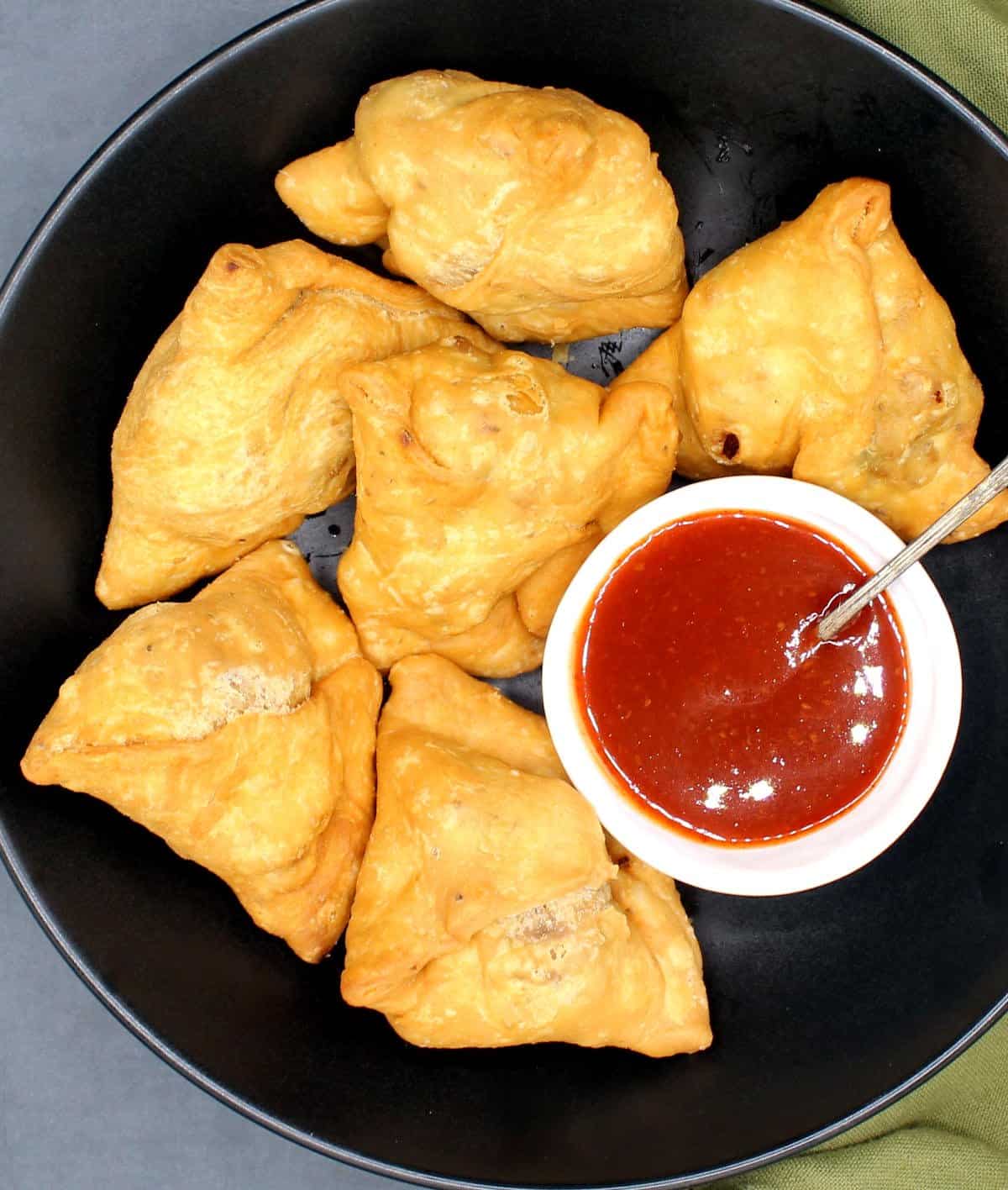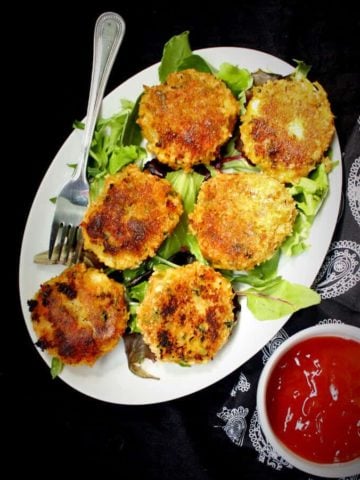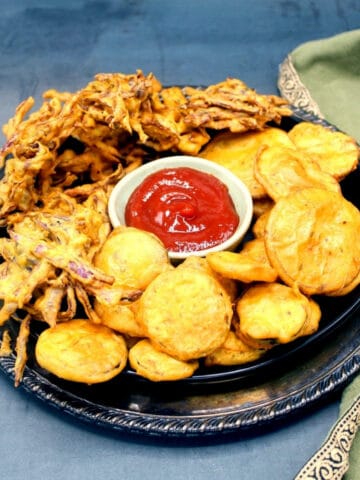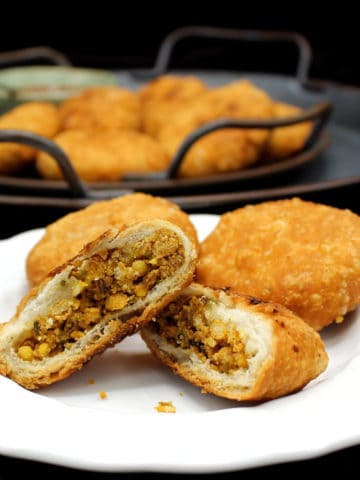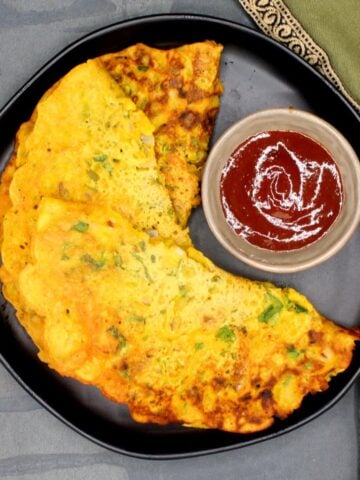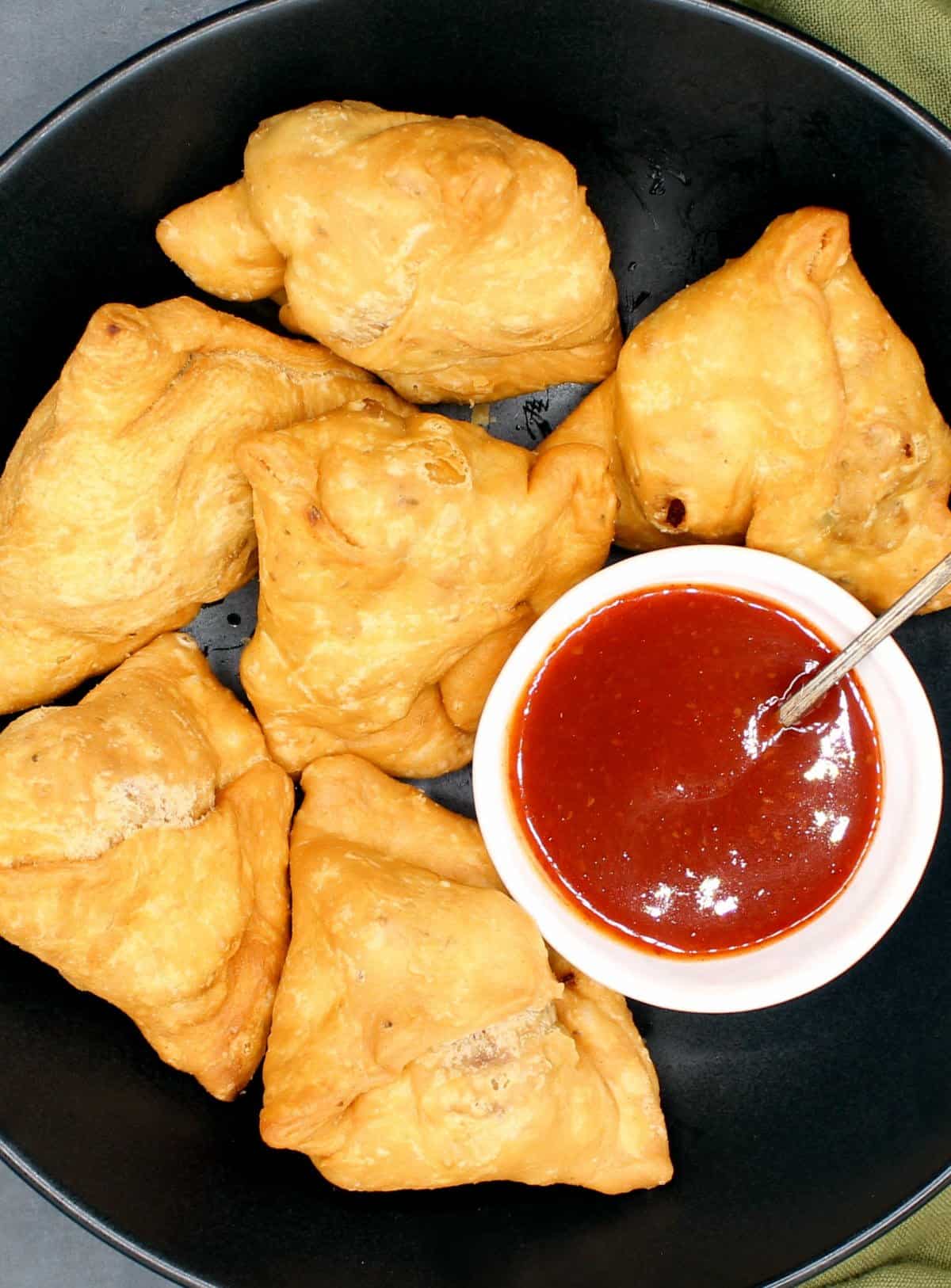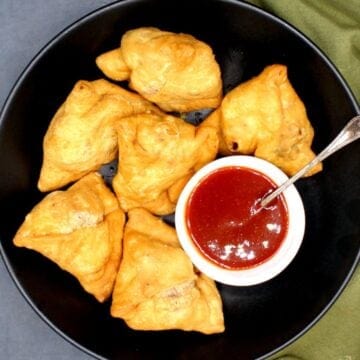You might also love these recipes for vegan keema samosa, baked samosas with a chickpea filling, and easy samosa puff pastry squares. Almost anyone in the world can recognize a samosa with its uniquely chubby, tri-cornered, cone shape. And it’s probably a rare person whose mouth wouldn’t water at the thought of eating one. The potato and pea stuffed pastry pockets are most often identified with Indian cuisine, but versions of samosa exist across many global cuisines, including in the Horn of Africa (sambusa), in the Middle East (sambousek) and in central Asia (samsa). Samosas were introduced to India by Mughal invaders who arrived in the 16th century from central Asian nations like Turkmenistan and Uzbekistan. Unwelcome though the invaders were for the nearly three centuries they remained in northern India, Mughlai cuisine was so rich and so delicious that it was willingly and readily adopted and remains, to this day, firmly embedded within India’s culinary tapestry. If you’ve eaten a biryani or a naan or a gulab jamun at a north Indian restaurant, you have eaten Mughlai food. A samosa can be stuffed with nearly anything: Indian Muslims often stuff it with meat, and modern versions include stuffings that range from Indo-Chinese noodles to fish, pasta, scrambled eggs, paneer and chocolate. But nothing can beat the allure of the classic, deep fried Punjabi samosa with a mouthwatering stuffing of peas and potatoes. It’s a gastronomic experience to sink your teeth into one and hear it crackle back at you.
Why you will love this recipe
A samosa is one of the most delicious savory pastries in the world, and with this recipe you can easily make it in your own kitchen. Achieving the perfect samosa is a labor of love, but with the tips and tricks I have for you, you will master this Indian classic in no time. Be sure to read the expert tips below that break the process down into easy steps. It’s great snack or appetizer. No one can resist a samosa and when you serve it to your family and friends you can rest assured they will love you all the more. 😉 You can size a samosa according to your needs–make it small for an appetizer or for small hands. Make it larger for a snack or a gathering of adults. Punjabi samosas are usually large. Recipe is vegan– or rather, it’s easy to veganize. Indian cooks often use ghee as “moyen”: the Punjabi term for the fat mixed into the flour to create a flaky texture for the samosa wrapper. Oil doesn’t quite achieve the right consistency but I have the perfect vegan hack for you that gives spectacular results. Allergy-friendly for most. Everyone loves a good samosa, from kids to adults and everyone in between. It’s easily the most requested snack in my home. It is nut-free and soy-free although it does have gluten.
How to make samosa (step by step video and recipe)
Watch the video:
Make samosa wrapper dough:
Place all the ingredients except the water in a large mixing bowl. Using your fingers, rub the butter into the flour until it gets grainy. This process is not unlike making a pie pastry, although here you will use your fingers. Trickle in the water slowly and knead just until a stiff but pliable dough forms. Cover the ball of dough with a kitchen towel and set aside for at least 30 minutes.
Make the peas potato filling:
Heat oil and add to it the green chilies and ginger. Saute for about 30 seconds. Add the powdered spices: ground cumin, ground coriander, coarsely ground fennel, amchur if using, and turmeric. Mix. Add the boiled potatoes and mix well. Next add the green peas and stir them into the potatoes. Add salt to taste. Cover the potatoes and cook until warmed through, no more than 3-5 minutes. Mash the potatoes lightly with your ladle before turning off the heat. I like some large potato chunks in there but if you want you can mash it more, leaving just a few chunks of potatoes in for texture. Cool the peas potato filling to room temperature.
Assemble samosas:
Roll out the dough
Divide the dough into seven equal portions. Roll each into a ball. Roll out one ball of dough into a circle around five inches in diameter. Then roll out the sides slightly longer to form an oval. Use a knife or pastry cutter to make a clean cut through the center of the oval, creating two semi-circles or half-moons. Set them aside on a plate and repeat the process for the remaining dough.
Stuff samosas
Brush the edges of the pastry with water. Then pick the two corners of the semicircle and bring them together, edges overlapping slightly, to form a cone. Press the seams together to ensure a tight seal (watch video to see how it’s done). It’s important to do this thoroughly because you don’t want your samosas to open while you’re frying them. Place two heaping teaspoons of filling in the cone, pressing it in lightly. Make sure you leave enough room at the top so you can seal the samosa. Now seal the top of the samosa by pressing the top seam together. For a classic shape, make a slight fold in the center as you press the seams together and fold the edge in so the samosa can “sit” when you put it down. Repeat with the 13 remaining wrappers.
Deep fry samosas:
Heat enough oil in a wok to immerse the samosas completely. If you have a deep fryer use that. Or use a cast iron pot or pan. Once the oil has reached 325 degrees Fahrenheit/165 degrees Celsius carefully drop the samosas one by one in the oil. Don’t overcrowd the pan. If you don’t have a thermometer to check the oil temperature, just heat the oil until it shimmers and small bubbles form at the bottom of the wok. The oil should not smoke. When you drop the samosas into the oil they should bubble gently. Let the samosas fry, simmering gently in the hot oil, until they are evenly golden brown. Don’t let them get too dark and flip them occasionally to ensure they fry evenly. Maintain the oil at about medium heat and avoid the temptation to blast it up unless the oil gets too cold: maintain frying temperature at around 325 degrees for the best results. Frying at high temperatures will cause the samosa wrappers to brown quickly outside while remaining uncooked on the inside. Once the samosas are ready remove them to a colander or dish lined with paper towels. Serve hot!
Serve
Restaurants serve samosas with a date tamarind chutney (like this one in my ragda pattice recipe) or a mint chutney. Check to get new recipe updates by email.
In Bombay, and over the rest of India, samosas are a popular street food, and they are often served with ketchup for dipping. Sometimes they are also encased in a pav ( a soft roll), or torn into pieces and smothered in chana masala, chutney, tomatoes and onions for a samosa chaat. You can try any of these for differently delicious experiences.
Store
Refrigerate: In my home samosas usually don’t last long enough to go into the fridge. 🙂 However, you can refrigerate any leftover samosas for up to a week in an airtight container. Freeze: Freeze the samosas in a freezer-safe bag or container for up to three months. You can also freeze the samosas before you fry them–to do that, flash-freeze the samosas on a baking sheet and then place them in a freezer-safe bag. Thaw before frying. Reheat: Reheat in a 350-degree Fahrenheit/180-degree Celsius oven until warmed through.
More yummy Indian snack recipes
Recipe card
